KE KAI
~~~~~~~~~
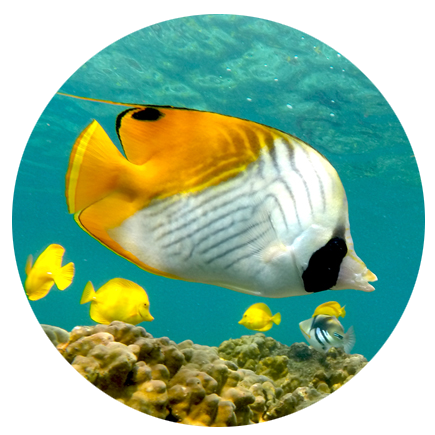
Enjoying and protecting our spectacular ocean environment
We’re all visitors to the island of Hawaii, whether we’re here for three days or three generations, and we share a responsibility to care for the ocean and its multitude of living residents. Our surrounding seas contain worlds of fish, ocean mammals, corals, plants and sea creatures of every size and shape, waiting to be experienced.
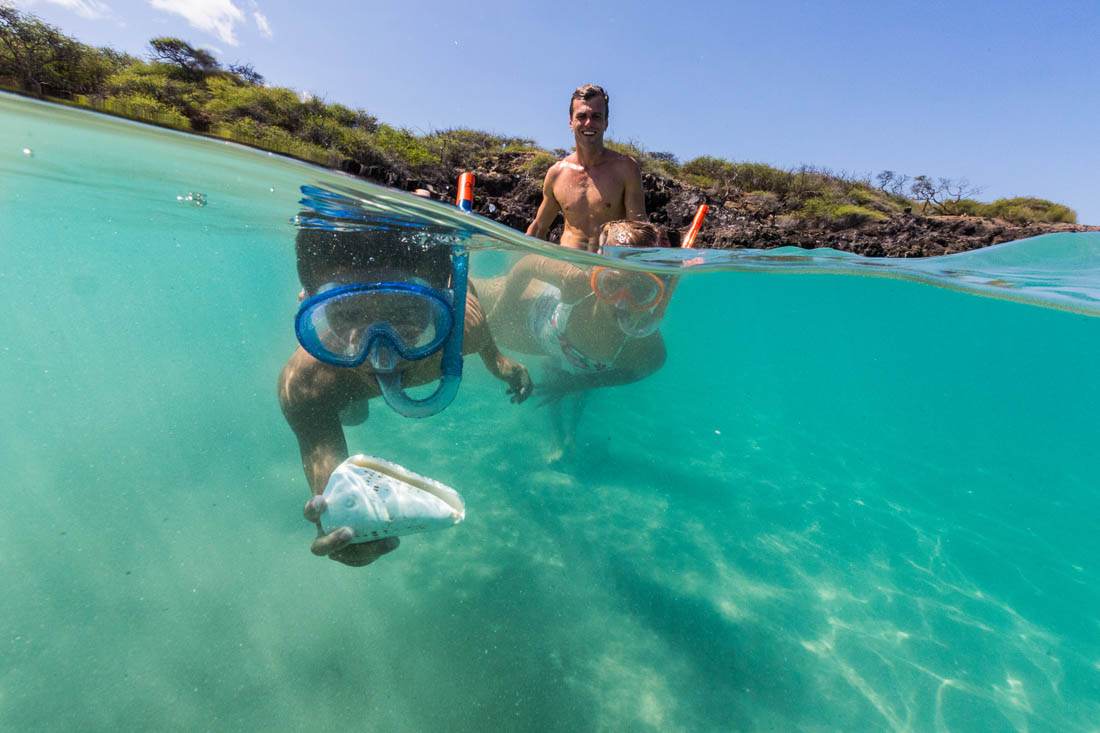
Hawaii invites visitors from around the world to come and explore the breathtaking ocean adventures this island has to offer. And when we do, we need to be mindful when we swim, snorkel, dive, or sail over these irreplaceable habitats, that this underwater world belongs to them. The impact of humans on the marine environment is unquestionable, and with awareness and effort, we can help preserve it for generations to come—not just generations of people, but of the countless species that make their home in the ocean.
Last year, the Island of Hawaii Visitors Bureau introduced a creative new approach to increase awareness of, and protection of, our island’s environment, culture and peaceful nature. The “Pono Pledge” (pono: goodness, morality, correct or proper procedure, well-being, true condition or nature, righteous) is an agreement, a promise as such to respect and care for the Island, and of oneself. To learn more, visit www.ponopledge.com.

Here on the island, there are numerous ways to help; most importantly, we need to be informed.
For example, last summer, the Hawaii State Legislature passed a new law banning sunscreens that contain the chemicals oxybenzone and octinoxate which destroy coral reefs. Inspired by a massive global coral bleaching event, Hawaii was the first state, and the most prominent visitor destination in the world, to do so. The law goes into effect in January 2021, but many are making the switch now, and it’s never too soon to start changing behaviors to help our coral reefs and marine life.
According to The Kohala Center, a nonprofit science-based community organization, reef-friendly sunscreens are those based on zinc oxide and titanium dioxide, with no nanoparticles.
- Little Hands Hawaiʻi: kid-friendly, FDA-approved facility on Hawaiʻi Island, earth-friendly packaging
- Hana Naiʻa: zinc oxide, Hawaiian coffeeberry, organic jojoba, organic essential oils
- Ko‘a Organics: Broad Spectrum SPF 30 UVA/UVB Protection Sunscreen
For a more extensive list of options, Kahaluʻu Beach Education Center’s Reef Friendly Sun Protection Guide web page.
Another new law, this one passed by Hawaii County, hopes to help protect the oceans, and the entire environment, and went into effect on July 1, 2019. This law bans all eateries and County facilities on Hawaii Island from using polystyrene (styrofoam) containers.
Styrofoam is only one type of plastic in the eight million metric tons of plastic scientists say enter the world’s oceans every year. On Hawaii Island, plastic pollution is an enormous issue, and it has reached national attention—with a shocking story in a recent Huffington Post about Kamilo, “the Plastic Beach.” And, a National Geographic article describes how the brand-new black sand beach at Pohoiki, created by last year’s volcanic lava flows, incredibly, contains microplastic particles. These tiny pieces smaller than 5mm, likely drift to Hawaii from the “Great Pacific Garbage Patch,” and they never fully decompose.
University of Hawaii-Hilo (UHH) senior Nicolas Vanderzyl, working with scientist Steven Colbert, has devised a method to separate microplastics from sand, and continues studying the beach at Pohoiki. He’s working with an innovative “vacuum cleaner” machine called “Hoola One” (life of the sand), designed and built by engineering students from the Universite de Sherbrooke in Quebec, Canada. Supporting his effort are UHH and the nonprofit Hawaii Wildlife Fund (HWF).
-1288-slippers.jpg)
Bill Gilmartin, co-founder of Hawaii Wildlife Fund, began organizing regular cleanups at Kamilo in 1993. Dozens of volunteers spend the day gathering literally tons of plastic items, fishing lines and nets. HWF maintains an active events calendar of community beach cleanups and other activities. For more information, visit www.wildhawaii.org or email kakakai.cleanups@gmail.com.
In January, HWF “celebrated” collecting 250 tons of marine debris, according to the Hawaii Tribune-Herald. The state Department of Land and Natural Resources noted the group and its volunteers go beyond any call of duty to help protect, preserve and repair Hawaii’s natural and cultural resources.
On the island’s west side, coral is recovering at the Kaupulehu Marine Reserve, according to recent surveys, since the inception of the “Try Wait” program. Driven by the community, the ten-year suspension of fishing began in 2016, and is intended to allow fish populations and coral reefs to replenish. Last September’s survey by The Nature Conservancy (TNC) determined that some resource fishes have increased by 30-60 per cent. View the video here.
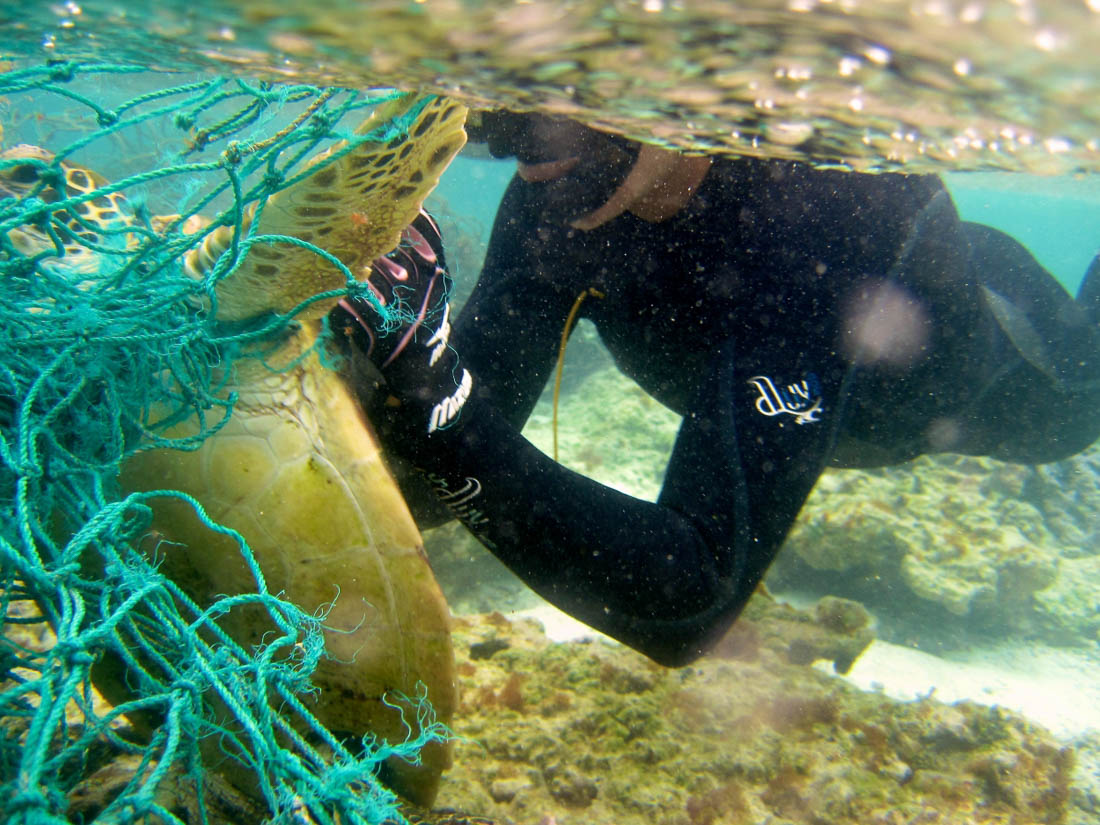
Snorkel Bob, popular ocean activities provider since the 1970’s, has a deep love for the ocean and the myriad life forms he’s observed over the decades. What he calls “Reef Etiquette” is a simple list of mindful behaviors that can really make a difference. Here are Snorkel Bob’s top five rules:
- Don’t stand on, walk on or touch coral. Each tiny polyp is a delicate animal.
- Adjust your mask strap BEFORE going in. Be aware of your fins at all times.
- Feeding marine life disrupts the natural balance.
- Pick up trash and plastic. Sea turtles see plastic bags as jellyfish—and try to eat them.
- Take monofilament line and net from beach and water. Turtles and others get tangled. If you see snagged mono, pull it out gently and put it in a trash can.
Another activities provider, Hawaii Ocean Sports, has been locally owned and operated since 1981. In addition to snorkeling, and pleasure cruises, where they always practice reef etiquette and education, they specialize in Hawaii’s most epic visitors, the humpback whales. From November to April each year, their seasonal whale watch cruises always include a marine biologist to answer questions, inform visitors about the sea life they may encounter, and share important information about our roles in preserving it.
Ocean Sports, Snorkel Bob and others follow the National Oceanic and Atmospheric Administration (NOAA) and Department of Land and Natural Resources (DLNR) directives prohibiting vessels, swimmers and divers from approaching a humpback within 100 yards, herding or driving them from any distance, separating a cow from her calf, or substantially disrupting the normal activities of a humpback. Ocean activities providers may also play a role in helping marine mammals, that have become entangled in fishing line.
Individuals who find a whale, dolphin, or seal that may be in trouble (i.e. entangled in line, appearing to be injured, sick, or dead) call NOAA Statewide Reporting Hotline at 888-256-9840 for whales, dolphins, and turtles. For monk seals, you can also call the Marine Mammal Center’s 24-hour hotline at 808-987-0765.
You can learn more about the Hawaiian Monk Seal at Ke Kai Ola Monk Seal Rehabilitation Center within the Natural Energy Laboratory of Hawaii Authority (NELHA) campus. Since it opened in 2014, Ke Kai Ola has helped rescue, heal and release 25 seals, most from the Northwestern Hawaiian Islands.
Friends of NELHA conducts twice-weekly tours of Ke Kai Ola, along with West Hawaii Explorations Academy and the Ocean Thermal Energy Conversion facility. Ke Kai Ola itself is open for visitors M-F for one hour, 10-11 a.m. Please call 808-987-0765 for reservations (a $15 donation is recommended).
Another of Hawaii’s Protected Species are sea turtles, often seen basking on beaches and shoreline areas, a unique turtle behavior that’s only been documented in the Hawaiian Islands and Australia. And while they may be easy to approach, and are definitely fascinating to watch, people need to give them space.
Hawaii is actually home to five different kinds of turtles. The most prevalent are the Hawksbill sea turtle (honuea or ea), and the green sea turtle (honu). The Hawaii Wildlife Fund has posted a turtle ID card here.
HWF has the following tips for Turtle Watching Etiquette:
- Hands to yourself and don’t touch.
- Enjoy from 15 feet away.
- Leave nothing behind; trash hurts turtles.
- Photos without flash please.
Report turtles that may be in trouble to 888-256-9840.
As mentioned earlier, the #1 major threat to wildlife in, on, or near the ocean is caused by marine debris. William de Rooy, owner-operator of Nautilus Dive Center in Hilo, is—like many ocean business owners—concerned about the increasing problem of marine debris. The majority of the debris, he says, comes from beachgoers and shoreline fisherman. Monofilament line is a huge problem, entangling and ensnaring not just fish, but turtles, dolphins, and other marine life. Additionally, he says that fish populations have decreased significantly in the 35 years he’s been diving.
De Rooy advocates for programs similar to the “Try Wait” rest period in Kaupulehu, and for the establishment of more Marine Life Conservation Districts. The only MLCD on the east side of Hawaii was the Kapoho Tide Pools, which were overrun by lava in last year’s extended volcanic event.
HWF encourages individuals to actively participate in the effort, listing "10 things you can do to reduce marine debris."
Here are the Top Five:
- Reduce, reuse, recycle, and refuse single-use plastics. Choose reusable items and fewer disposable ones. Please visit www.recyclehawaii.org website to discover more recycling options (e.g., batteries, cans, cell phones, computers, fishing line).
- Place all rubbish in trash cans with lids, so it doesn't blow away. Keep streets, sidewalks, parking lots, and storm drains free of trash as they empty into our oceans. Throw all cigarette butts and bottle caps into refuse containers!
- Encourage your tackle shops, docks, marinas, and fishing piers to provide adequate trash cans and recycling bins for used line and other trash. Bring your oil cans, food wrappers, cigarette butts back to shore. Click here for info on monofilament recycling programs.
- Paper or Plastic? Neither! Remember to use your reusable shopping bags. In addition, “Less is more” – be mindful to select products with minimal packaging.
- Use water filters, water coolers, and refillable metal and glass bottles instead of purchasing bottled water.
“Voluntourism” gives visitors from everywhere the opportunity to give back to Hawaii Island in a meaningful way. Travel2Change.org books (free) activities in parks and beaches where many hands are needed to restore and maintain places. One location is the Kaloko-Honokohau National Historical Park, near Kona International Airport. Here, volunteers from near and far work to clear invasive plant species from the Aimakapa Fishpond, believed to be at least 600 years old, while learning about the region’s history and culture.
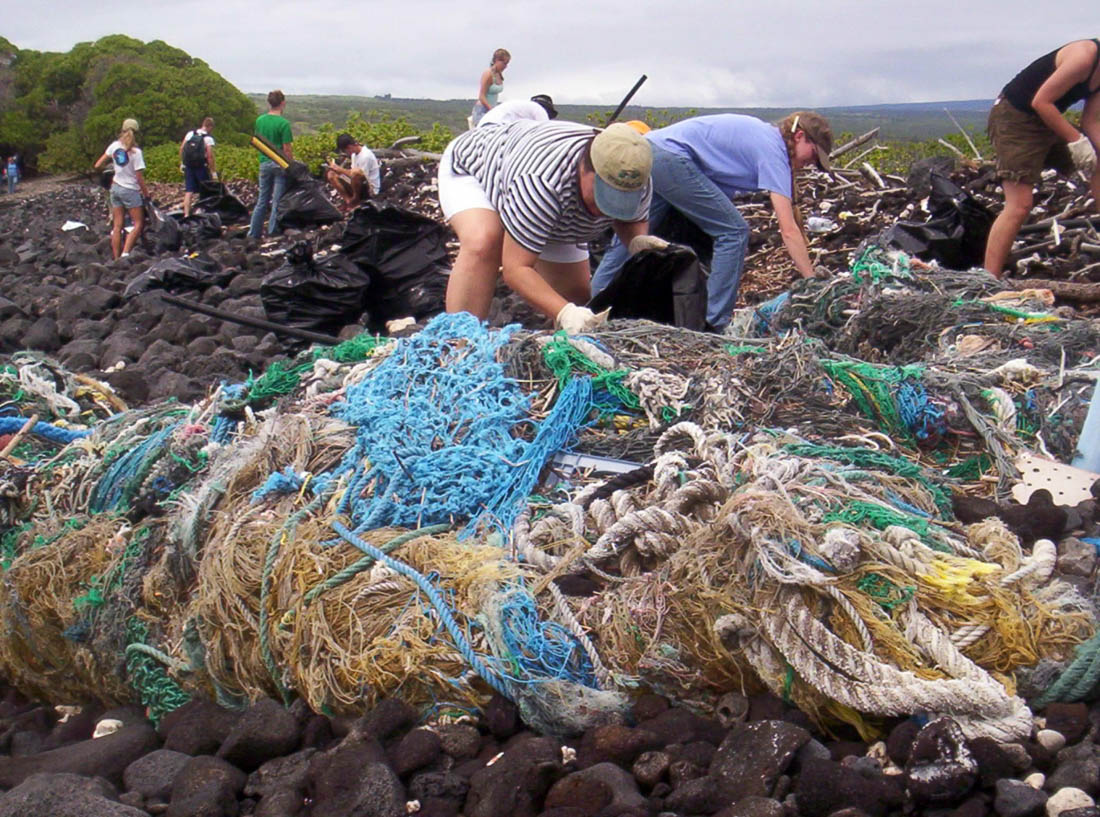
In Hawaii, 808 Cleanups is a statewide, all-volunteer collaboration encouraging communities to Adopt A Site, and organize cleanups at their favorite beaches. Their support system includes a custom app to track cleanup data and connect with volunteers, a calendar of events, starter kit with luggage scale for weighing rubbish, graffiti removal training, and more.
808 Cleanups is part of the Hawaii Environmental Cleanup Coalition, whose mission includes cleanup efforts on land and sea, a centralized resource of volunteers, and a goal of removing 100,000 pounds of marine debris for the return of Hokulea and Hikianalia worldwide voyages and environmental mission.
But what happens to rubbish and marine debris once it’s removed? On Hawaii Island, artists repurpose these resources, creating beautiful works with a message, and a purpose. In South Kona, artist Don Elwing began volunteering with HWF and then took scavenging to the next level. He has developed a unique and vibrant art form by sculpting and “painting” with found materials, mostly plastic fibers, rope and net—from a recreation of Van Gogh’s “Starry Night” to nearly lifesize forms like the blue green ragged figure, “Sea Hag.” He’s connected with other environmental artists, and ships hundreds of pounds of leftover materials to the mainland. For more information, email.
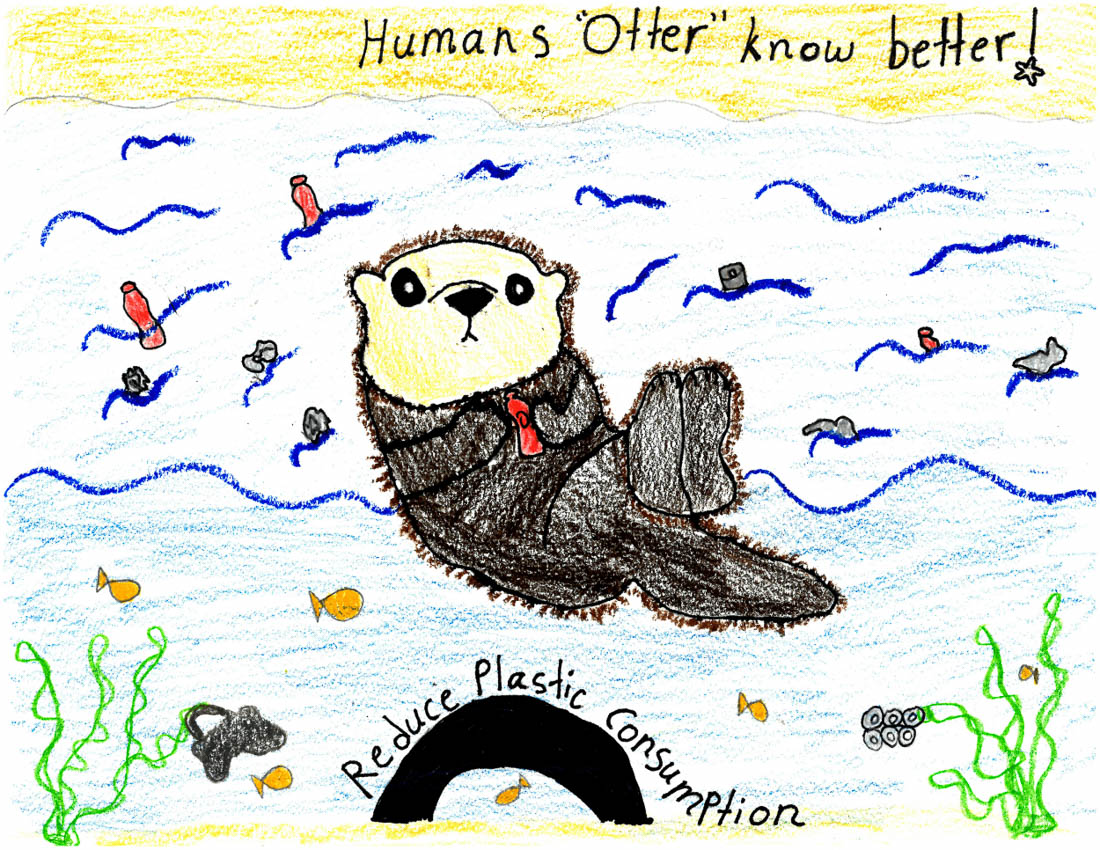
Farther north, Holualoa artist Kat Crabill crafts wearable art jewelry from found plastics along the Kamilo Beach. On her regular visits, Kat will pick up plastics, sort them, recycle some, share with other artists and/or researchers. She separates the plastics with intriguing texture and composition, that can be used for her jewelry, then photographs and catalogues each piece—so that her customers can know where their art comes from. The plastic is then ground, sculpted to the desired shape, and sanded and polished by hand. She then sets the pieces like gemstones, fabricating recycled silver backings and settings. The results are striking enough to capture O magazine’s attention.
Young artists from Hawaii use their talents to help raise awareness of marine debris every year in NOAA’s Annual Marine Debris Program Art Contest. Two winners from Hawaii are featured in the 2020 Calendar, along with student works from Ohio, Pennsylvania, Massachusetts, Michigan, California, Georgia, Idaho, Mississippi, and the U.S. Virgin Islands. The calendar will be available for download later this year on NOAA’s website.
Artists, scientists, students, activists, visitors and kamaaina (residents) treasure our ocean environment in countless ways. From the serenity of a quiet beach, swimming with fishes in the mysterious world of the coral reef, or sailing along the coast with spinner dolphins, the ocean offers unforgettable experiences here, like nowhere else.
At the end of the day, as we soak up the last crimson-gold glow of sunset blessings, we can look out over the vast horizon and remember the universes of life beneath the mirror surface. With gratitude and respect, we can stand a moment, humbly confident that our visit did no harm, but in fact, perhaps, we may have made some tiny, wondrous contribution to the ocean we love. Live pono.
Lead Image: Butterfly Fish - Island of Hawaii Visitors Bureau | Kawika Singson
